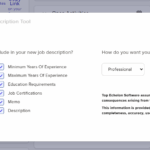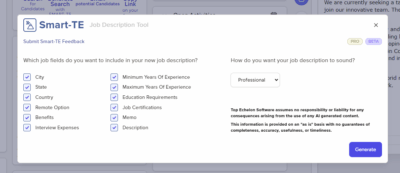Diversity in the workplace refers to the presence of individuals from a variety of backgrounds, cultures, and demographics in a given work environment. It involves recognizing, respecting, and embracing differences among employees in terms of race, ethnicity, gender, age, sexual orientation, religion, physical ability, and socioeconomic status, among other factors.
The ultimate goal of diversity in the workplace is to create a positive and inclusive environment that values and leverages the unique perspectives and experiences of each employee.
Benefits of diversity in the workplace
As you might imagine, there are numerous benefits of diversity in the workplace, which underscores the importance of making it a priority. That’s because the benefits are for both the employer and the employee. Encouraging diversity in the workplace is essentially a “win-win” situation for everybody involved.
With this in mind, below are seven benefits of diversity in the workplace:
#1—Increased creativity and innovation
First, diversity encourages new ideas and perspectives. When individuals from diverse backgrounds come together, they bring different experiences, beliefs, and values that can spark creativity and new ways of thinking. This leads to a wider range of ideas and solutions being generated, increasing the likelihood of finding innovative solutions to problems.
Second, a diverse workforce can lead to improved problem-solving. By bringing together people with different skills and experiences, organizations can tackle problems from multiple angles. This can lead to more comprehensive and effective solutions, ultimately leading to increased innovation.
Third, a diverse workforce can help organizations better understand and connect with their customers. By having employees from different cultures, ethnicities, and backgrounds, organizations can better understand the needs and preferences of their customers. This can lead to more innovative products and services that better meet the needs of a diverse customer base.
Finally, a diverse workplace can improve employee morale and satisfaction. When employees feel valued and included, they are more likely to feel engaged and motivated in their work. This can lead to increased productivity and employee retention, which can ultimately lead to increased innovation and creativity.
#2—Improved decision making
First, diversity in the workplace promotes critical thinking. When individuals from diverse backgrounds come together, they bring different viewpoints and ideas, which can help to identify potential flaws or biases in decision making. This can lead to a more comprehensive evaluation of options and a more informed decision-making process.
Second, a diverse workforce can lead to more creative solutions. By bringing together individuals with different experiences and perspectives, organizations can approach problems from multiple angles. This can lead to more innovative and effective solutions that may not have been considered otherwise.
Third, diversity can help reduce groupthink. Groupthink is a phenomenon in which a group of individuals may conform to a dominant perspective or opinion, leading to flawed decision making. By having a diverse group of individuals with different opinions and viewpoints, organizations can avoid this phenomenon and make more objective and informed decisions.
Finally, diversity in the workplace can help increase accountability. When individuals from diverse backgrounds are involved in the decision-making process, it can lead to increased transparency and accountability. This can lead to better decision making, as individuals are more likely to consider the impact of their decisions on different groups of people.
#3—Increased productivity
First, diversity in the workplace can lead to increased creativity and innovation, which can lead to more efficient processes and improved productivity. When individuals from diverse backgrounds come together, they bring different experiences, beliefs, and values that can spark creativity and new ways of thinking. This can lead to the development of new and innovative ideas, processes, and technologies that can improve productivity.
Second, a diverse workforce can improve problem-solving, which can lead to improved productivity. As noted previously, by bringing together people with different skills and experiences, organizations can tackle problems from multiple angles. This can lead to more comprehensive and effective solutions, ultimately improving productivity.
Third, diversity can lead to increased employee engagement, which can lead to increased productivity. When employees feel valued and included, they are more likely to feel engaged and motivated in their work. This can lead to increased productivity and employee retention, ultimately leading to even more productivity.
Finally, diversity in the workplace can improve the quality of decision making, leading to improved productivity. By bringing together people from different backgrounds, experiences, and perspectives, organizations can make more informed and objective decisions.
#5—Enhanced employee engagement and retention
First, a diverse workplace can lead to a more inclusive culture, which can improve employee engagement and retention. When individuals feel included and valued, they are more likely to feel engaged in their work and the organization as a whole. This can lead to increased productivity, innovation, and employee retention.
Second, a diverse workforce can lead to a more positive work environment, which can also improve employee engagement and retention. When individuals from diverse backgrounds come together to work towards a common goal, it can create a positive and supportive work environment. This can lead to increased employee satisfaction, engagement, and retention.
Third, diversity in the workplace can lead to increased opportunities for growth and development, which can also improve employee engagement and retention. When individuals from diverse backgrounds are given equal opportunities to grow and develop within the organization, they are more likely to feel valued and engaged in their work. This can lead to increased employee retention, as individuals are more likely to stay with an organization that supports their growth and development.
#6—Improved customer relationships
Having a diverse workforce allows a company to better understand and relate to its diverse customer base. Employees from different backgrounds bring unique perspectives and experiences to the table, which can help a company better understand the needs and preferences of its customers. This understanding can lead to better customer service, tailored marketing strategies, and a more positive customer experience overall.
In an inclusive workplace, employees feel valued and respected for who they are, which can lead to increased job satisfaction and productivity. Happy employees are more likely to go above and beyond for customers, leading to improved customer relationships. In addition, an inclusive workplace can also help to reduce employee turnover, which can be costly for a company.
Another benefit of improved customer relationships in a diverse workplace is the potential for increased customer loyalty. When customers feel seen and heard by a company, they are more likely to remain loyal and continue to do business with that company. In today’s competitive marketplace, customer loyalty is essential for the long-term success of an organization.
#7—Increased global competitiveness
Increased global competitiveness is also vital for the success of any organization. A diverse workplace can play a significant role in achieving this goal. When employees from different backgrounds, cultures, and ethnicities come together to work towards a common objective, the results can be truly remarkable.
One of the primary benefits of increased global competitiveness in a diverse workplace is the ability to attract and retain top talent from around the world. A diverse workforce can bring a variety of perspectives, ideas, and approaches to problem-solving, which can lead to greater innovation and creativity. This, in turn, can help organizations stay ahead of the curve and remain competitive in an increasingly global marketplace.
Moreover, as discussed above, a diverse workplace can also help organizations better understand and meet the needs of their diverse customer base. By having a workforce that reflects the diversity of their customers, organizations can better understand their needs and preferences and develop products and services that better meet their needs. This can lead to increased customer loyalty and satisfaction, and ultimately, increased revenue and profitability.
Another benefit of increased global competitiveness in a diverse workplace is the ability to build stronger relationships with stakeholders, both inside and outside the organization. When employees feel valued and respected, they are more likely to be engaged and productive and to remain with the organization for the long term. This can lead to stronger relationships with customers, suppliers, and other stakeholders, which can ultimately lead to increased success and growth for the organization.
Why diversity in the workplace is good for business
Speaking of creating that “win-win” situation, hiring a diverse team is good for business.
This is just one reason why organizations should strive to have a diverse workplace, but below are four ways hiring a diverse team is good for business:
#1—Access to a larger talent pool
Hiring a diverse team can provide access to a larger talent pool, which can be beneficial for businesses in many ways. When companies prioritize diversity, they are able to tap into a broader range of skills, experiences, and perspectives. This can help to attract a wider range of candidates, including those who may have been overlooked in the past.
By hiring a diverse team, companies can also tap into talent from different backgrounds and cultures. This can be particularly beneficial in industries that require a global perspective, as diverse teams can bring unique insights and expertise to the table. In addition, diverse teams can help companies better understand and serve a diverse customer base, which can lead to increased sales and customer loyalty.
Diversity in the workplace can also help companies to fill skills gaps and meet business needs. By attracting a wider range of candidates, companies can more easily find the skills and expertise they need to succeed. This can lead to increased efficiency, improved performance, and better outcomes for the company.
#2—Improved reputation and brand image
Hiring a diverse team can improve a company’s reputation and brand image in many ways. In today’s society, consumers are increasingly interested in supporting companies that prioritize diversity and inclusivity. By hiring a diverse team, companies can demonstrate their commitment to these values and attract customers who share them.
Companies that prioritize diversity are often viewed as more innovative and forward-thinking. This can help to create a positive image for the company and attract new customers.
Hiring a diverse team can also help to attract top talent to the company. Today’s job seekers are increasingly interested in working for companies that value diversity and inclusivity. By creating a diverse workplace, companies can improve their reputation as an employer and attract top talent from a wide range of backgrounds and experiences.
Finally, diversity in the workplace can help companies to avoid negative publicity and legal issues related to discrimination. By creating a culture of inclusivity, companies can ensure that all employees feel valued and respected. This can help prevent legal issues and negative publicity that can damage the company’s reputation and brand image.
#3—Compliance with diversity and inclusion laws
Hiring a diverse team is not only a moral obligation, but it also helps companies stay in compliance with diversity and inclusion laws. In many countries, including the United States, there are laws that prohibit discrimination on the basis of race, ethnicity, gender, sexual orientation, and other characteristics. By hiring a diverse team, companies can ensure that they are not violating these laws and avoid costly legal battles.
Hiring a diverse team can also help companies comply with affirmative action requirements. In some countries, including the United States, certain companies are required to take affirmative action to ensure that their workforce is diverse and reflects the diversity of the community in which they operate. By hiring a diverse team, companies can demonstrate their commitment to affirmative action and avoid legal issues related to non-compliance.
Furthermore, diversity in the workplace can help companies create a culture of inclusivity, which is essential for compliance with diversity and inclusion laws. By creating a workplace where all employees feel valued and respected, companies can ensure that they are not discriminating against anybody based on their race, ethnicity, gender, sexual orientation, or other characteristics.
#4—Ethical responsibility
Hiring a diverse team is an ethical responsibility that all companies have. All individuals deserve equal opportunities, and it is the responsibility of companies to ensure that their hiring practices are inclusive and non-discriminatory. Discrimination can take many forms, including race, gender, age, religion, disability, and sexual orientation, and it is the responsibility of companies to actively combat discrimination in all of its forms.
Creating a diverse workplace is not only the ethical thing to do, but it also helps create a culture of inclusivity and mutual respect. When individuals from diverse backgrounds work together, they bring different perspectives, ideas, and experiences to the table. This can lead to improved problem-solving, increased innovation, and a stronger team dynamic.
Finally, diversity in the workplace can help break down barriers and combat prejudice and bias. When individuals from diverse backgrounds work together, they’re able to learn from each other and challenge their own assumptions and biases. This can lead to increased understanding and empathy, both within the workplace and in the broader community.
Diversity in the workplace and your ATS
Diversity in the workplace is essential for creating a culture that values and respects differences in people and perspectives. An applicant tracking system plays a critical role in ensuring diversity in the recruiting and hiring process by providing equal opportunities for all candidates and reducing the risk of unconscious bias.
One way an ATS can promote diversity in the workplace is by removing identifying information, such as name, gender, and age, from resumes during the initial screening process. This helps eliminate potential bias and ensures that candidates are evaluated based on their skills and qualifications rather than their demographic information.
Another way an ATS can promote diversity is by using inclusive language in job postings. Using gender-neutral language and avoiding terms that may discourage certain groups from applying can help attract a diverse pool of candidates.
The use of diverse selection criteria is also important in promoting diversity. By establishing objective criteria, such as skills, experience, and education, and weighting them equally, an ATS can ensure that all candidates are evaluated fairly and without bias.
Finally, an ATS can help promote diversity by monitoring the diversity of the candidate pool and identifying areas where improvements can be made. This includes tracking the demographic data of applicants and identifying any patterns or biases in the recruiting and hiring process.
Promoting diversity in the workplace is crucial for creating a culture that values and respects differences. An ATS can play an important role in ensuring diversity in the recruiting and hiring process by removing identifying information, using inclusive language, establishing objective selection criteria, and monitoring diversity in the candidate pool. By implementing these strategies, organizations can build a diverse and inclusive workplace culture that benefits everybody involved.
Diversity in the workplace and Top Echelon
Top Echelon offers a leading recruiting and hiring software package for recruiters and HR professionals. You can try Top Echelon Software yourself to see how it can help you and your organization.
You can get free recruitment software for 15 days as part of your Top Echelon trial.
Not only that, but you can also request a recruiting software demo of our applicant tracking system.
We also encourage you to check out Top Echelon’s recruitment software pricing page for more information about the affordability of our ATS.









